January 14, 2025 · 10 min read
Improving Patient Safety Committees with Secure Meeting Management Solutions

Shaimaa Badawi
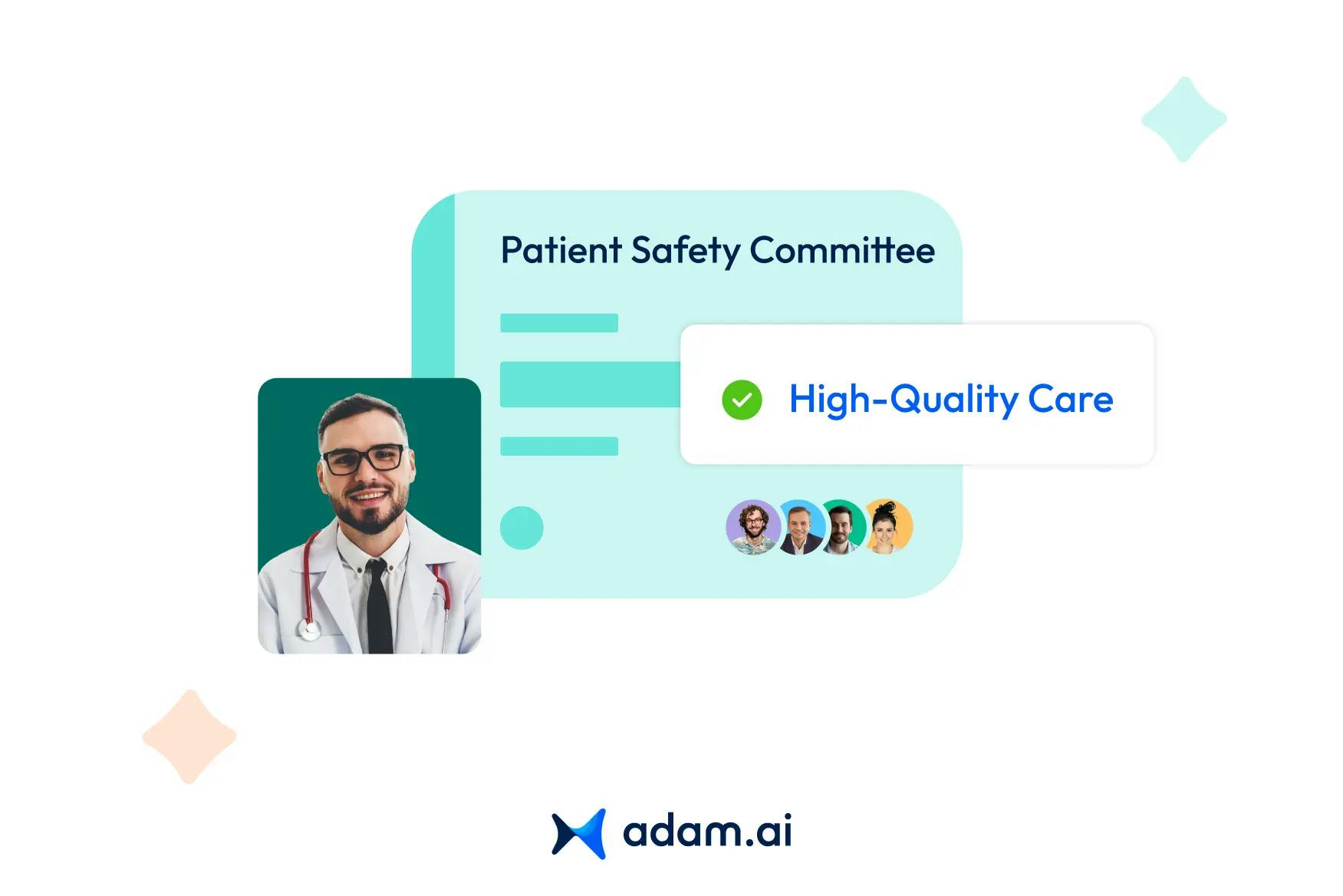
Patient safety committees play a crucial role in healthcare, ensuring high standards of care and minimizing risks. This article explores how secure meeting management solutions can enhance their operations by streamlining agendas, fostering collaboration, and tracking progress effectively. Discover the tools and strategies that help committees focus on their mission to improve patient outcomes.
What is the role of patient safety committees in healthcare organizations?
Patient safety committees ensure that healthcare organizations maintain a focus on delivering safe and high-quality care. They identify risks that could lead to errors, analyze the causes of safety incidents, and implement measures to prevent harm. By guiding staff on standardized practices and reviewing safety outcomes, these committees help improve care delivery and reduce preventable harm.
These committees also provide a space for healthcare teams to share concerns, review incidents, and discuss solutions. They ensure that safety initiatives align with organizational goals and regulatory requirements, creating a continuous process of evaluation and improvement.
Their efforts not only help protect patients but also enhance accountability and collaboration among healthcare teams. Engaging in multidisciplinary care meetings fosters collaboration across departments, ensuring that patient safety is approached from multiple perspectives.
Through their work, patient safety committees play a key role in creating an environment where patients, staff, and organizations can achieve better outcomes.
What are the common challenges faced by patient safety committees?
Patient safety committees face several challenges in achieving their objectives, often stemming from the complexities of healthcare environments and organizational limitations. Communication barriers are among the most significant, as miscommunication between departments or team members can result in incomplete incident reporting or unclear action plans.
Some common challenges include the following:
- Fragmented documentation systems: Without centralized platforms to record incidents and track progress, committees may struggle to analyze trends or ensure follow-through on corrective measures.
- Resource constraints: Limited access to staffing, data, or dedicated time often forces committees to prioritize reactive responses over proactive prevention strategies.
- Resistance to change: In many cases, ingrained habits or a lack of buy-in from staff can hinder the implementation of new safety practices or processes.
Additionally, creating a culture of openness remains a challenge. Fear of blame or punishment often discourages staff from reporting errors or near misses, which are critical for identifying systemic problems.
Committees must also contend with the complexity of healthcare systems, where interdependent teams and fast-paced environments make it difficult to enforce and monitor safety practices across the board.
How do communication gaps and inefficient documentation impact patient safety committees?
Communication gaps and inefficient documentation disrupt the flow of information that patient safety committees rely on to function effectively. When critical details are lost or delayed, it becomes harder to identify risks, implement changes, and monitor progress.
This weakens the committee’s ability to respond proactively to safety concerns. Leveraging data-driven decision-making in medical meetings can empower committees to make more informed choices, improving safety outcomes.
Here are the main ways these issues impact committee performance:
- Incomplete reporting of safety concerns: Poor communication leads to underreporting of incidents and near-misses, leaving committees unaware of recurring patterns or systemic risks.
- Delayed decision-making: Without timely and clear communication, committees may spend unnecessary time gathering or clarifying information, slowing their ability to act.
- Missed follow-ups: Inefficient documentation makes tracking corrective actions difficult, causing unresolved issues to persist.
- Redundant or inconsistent efforts: A lack of centralized, accessible records can result in repetitive discussions or differing interpretations of data.
How can secure meeting management solutions address these challenges?
Secure meeting management solutions provide a practical way to overcome many of the challenges patient safety committees face. These platforms centralize communication, streamline documentation, and enhance accountability, ensuring committees can focus on improving patient outcomes without being held back by operational inefficiencies.
Here’s how these solutions help:
- Centralized information: Secure platforms organize all meeting-related materials, such as agendas, minutes, and follow-up actions, in one place. Using meeting management tools, committees can enhance care coordination by ensuring seamless communication and task follow-ups. Balancing effective healthcare leadership and management is crucial for committees to align safety initiatives with organizational goals.
- Improved communication: Integrated tools, like real-time chat and video conferencing, make it easier for members to collaborate effectively, whether they are in the same building or working remotely.
- Automated follow-ups: Many solutions include task management features that track action items, assign responsibilities, and send reminders. This prevents missed follow-ups and keeps initiatives on track.
- Enhanced security: Data protection features, such as encryption and role-based access, ensure sensitive patient safety discussions and documents remain confidential and compliant with regulations like HIPAA.
- Comprehensive documentation: Meeting solutions often include options for generating reports and archiving decisions, creating a clear trail for audits, accountability, and future reference.
How do meeting platforms enhance communication, documentation, and decision-making?
Secure meeting platforms streamline communication, improve documentation, and strengthen decision-making processes for patient safety committees, helping them address challenges more effectively. Here's how:
Communication
Secure platforms enable real-time collaboration through video conferencing, chat, and shared comment spaces. These features allow members to communicate clearly, regardless of their location.
Streamlining communication across teams ensures that patient safety measures are implemented without delays or missteps. They reduce misunderstandings by ensuring everyone is on the same page during discussions and foster transparency by allowing immediate feedback on agenda items or safety concerns.
Documentation
Centralized document storage ensures that meeting agendas, minutes, and reports are easily accessible to all members. Centralized platforms for documentation enable committees to store and retrieve meeting records efficiently, supporting long-term safety initiatives.
Automated tools for note-taking and task assignments minimize manual errors and ensure that important decisions and follow-ups are accurately recorded. Version control features help track updates, so nothing is lost or overlooked.
Decision-making
Secure platforms improve decision-making by providing tools like voting mechanisms, action trackers, and analytics dashboards. Committees can significantly improve efficiency by reducing meeting time while maximizing impact through structured management.
Members can weigh options collaboratively in real time and assign responsibilities immediately. Visual summaries of past decisions and their outcomes give committees the data they need to make informed, evidence-based decisions.
What role does AI play in improving patient safety committee meetings?
AI improves patient safety committee meetings by simplifying tasks, analyzing data, and offering useful insights. Here's what AI can do:
- Automated agenda creation: AI can generate meeting agendas based on previous discussions, pending tasks, or specific safety priorities, saving time and ensuring focus on critical issues. Setting effective agendas for committees helps focus discussions on critical safety priorities and minimizes wasted time.
- Real-time transcription and summarization: During meetings, AI-powered tools can transcribe discussions, summarize key points, and automatically document decisions, reducing administrative burden and minimizing errors. Automated summaries for committee reporting simplify the documentation process, saving time and ensuring accuracy.
- Action tracking and reminders: AI monitors assigned tasks and sends timely reminders to ensure follow-ups are completed, preventing delays in implementing safety measures. AI-driven tools can also reduce meeting fatigue by automating repetitive tasks and streamlining discussions. Effective task delegation in committees ensures accountability and keeps safety initiatives moving forward
- Data analysis for trends and risks: AI can analyze incident reports, patient data, and safety logs to identify trends, potential risks, or recurring issues, equipping committees with data-driven insights to guide their strategies.
- Predictive insights: By analyzing historical data, AI can forecast potential safety challenges, enabling committees to take proactive measures before problems escalate.
Why is data security critical in patient safety committee meetings?
Data security is essential in patient safety committee meetings because these discussions often involve sensitive patient information and confidential organizational data. A breach of this information could lead to regulatory penalties, loss of trust, or harm to patients. Protecting this data ensures compliance with healthcare regulations like HIPAA, safeguarding both the organization and the individuals it serves.
Secure meeting platforms address these concerns by implementing advanced security measures. Encryption protects data during transmission and storage, ensuring that unauthorized access is prevented. Role-based access control allows only authorized members to view or edit sensitive documents. Audit trails track all activity within the platform, providing accountability and transparency.
Additionally, these platforms are designed to comply with regulatory standards, offering built-in features to meet legal requirements. For example, they may include tools to anonymize patient data, restrict file sharing, or notify users of compliance updates. By providing a secure and compliant environment, these platforms help committees focus on improving patient safety without risking sensitive information.
What are some examples of patient safety improvements achieved through effective meeting management?
Secure meeting management solutions have demonstrated significant improvements in real-world healthcare settings. Here are some examples that highlight their impact on patient safety:
Examples of patient safety improvements from effective meeting management
- Structured communication tools
The adoption of the SBAR (Situation-Background-Assessment-Recommendation) technique has streamlined communication between healthcare providers. By standardizing information sharing, teams at various hospitals have reduced medical errors and improved care coordination. - Interdisciplinary bedside rounds
Hospitals implementing collaborative bedside rounds, involving nurses, physicians, and patients, have seen enhanced communication and better care planning. This approach has improved safety outcomes, particularly in high-risk units like ICUs. - Improved workflow with secure messaging
Grady Health System in Atlanta introduced secure messaging systems for real-time communication among care teams. This reduced delays in decision-making and improved response times during critical situations. - Enhanced training through digital platforms
Healthcare organizations using digital platforms for continuous learning have improved patient safety awareness among staff. For instance, webinars and case studies on these platforms help teams stay updated on best practices. - Action tracking in patient safety committees
Some hospitals integrated meeting management software to track safety initiatives. With automated reminders and progress dashboards, committees ensured timely follow-ups, leading to a reduction in preventable harm incidents.
Contributions of secure meeting platforms to patient safety
- Data security in meeting platforms
A hospital group in Europe adopted a secure meeting platform that encrypted all patient-related discussions and documents. This compliance with GDPR regulations minimized data breaches and built trust among stakeholders. - Real-time collaboration during COVID-19
During the pandemic, healthcare organizations used secure video conferencing tools to manage incident command meetings. This facilitated real-time updates on patient capacity and resource allocation, improving crisis management. - Centralized safety reporting
A health system in the U.S. used a centralized platform for reporting and analyzing safety incidents. This allowed committees to identify trends faster and implement corrective measures across multiple facilities. - Task management for follow-ups
Some hospitals leveraged secure platforms to assign and track follow-ups on patient safety initiatives. These tools reduced delays in implementation and ensured accountability at all levels. - Compliance with HIPAA
By using secure platforms with built-in audit trails, hospitals ensured that all patient safety discussions met HIPAA standards, reducing legal risks and maintaining data integrity.
How can adam.ai empower patient safety committees to run effective meetings?
adam.ai empowers patient safety committees to run effective and impactful meetings by streamlining key processes and improving collaboration. Here’s how its features address their needs:
- Agenda management: adam.ai enables committees to create structured agendas, ensuring meetings stay focused on critical safety topics and time is allocated efficiently.
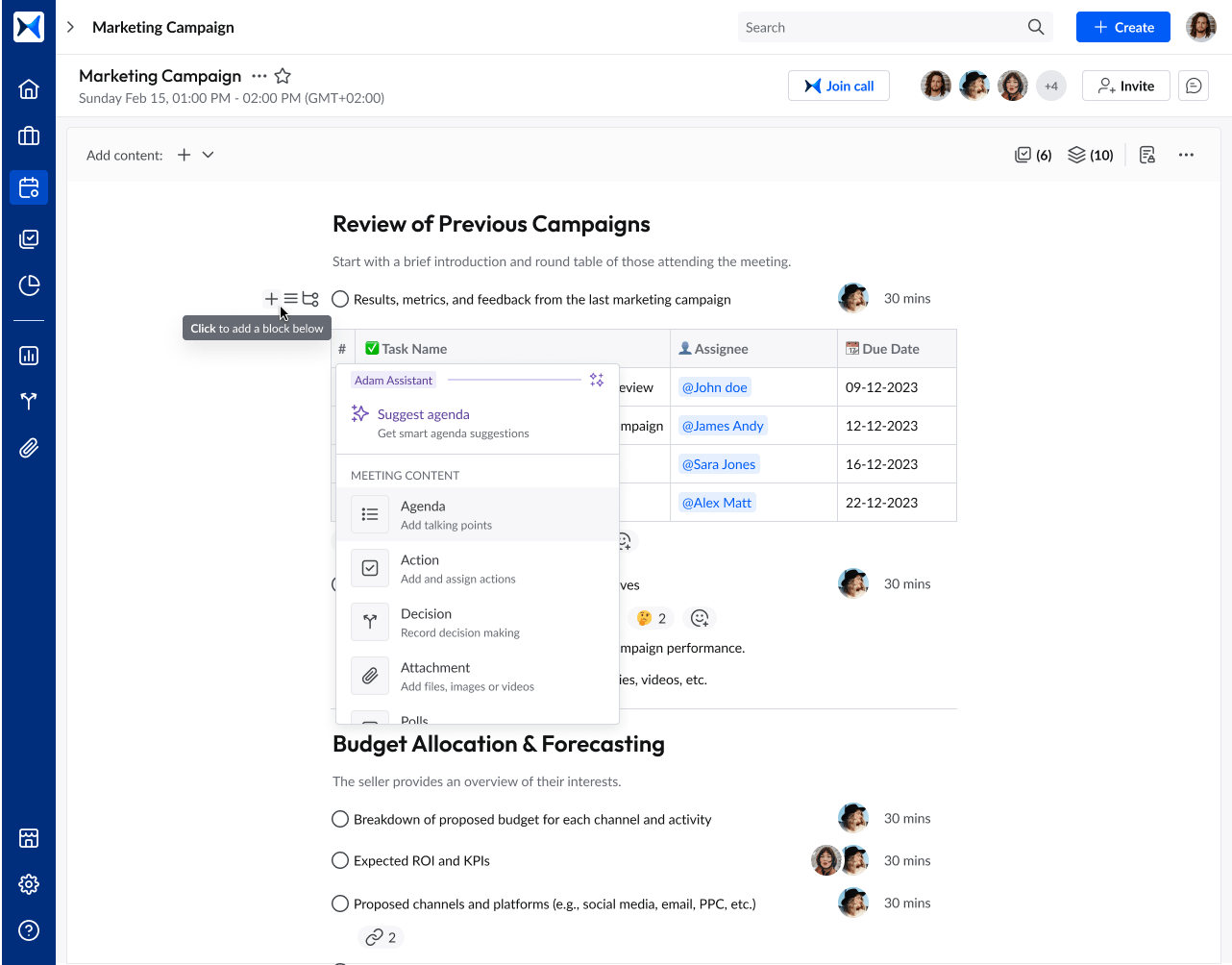
- Content collaboration: With centralized document sharing and real-time collaboration, members can access and discuss reports, policies, and updates seamlessly, reducing miscommunication and ensuring everyone is informed.
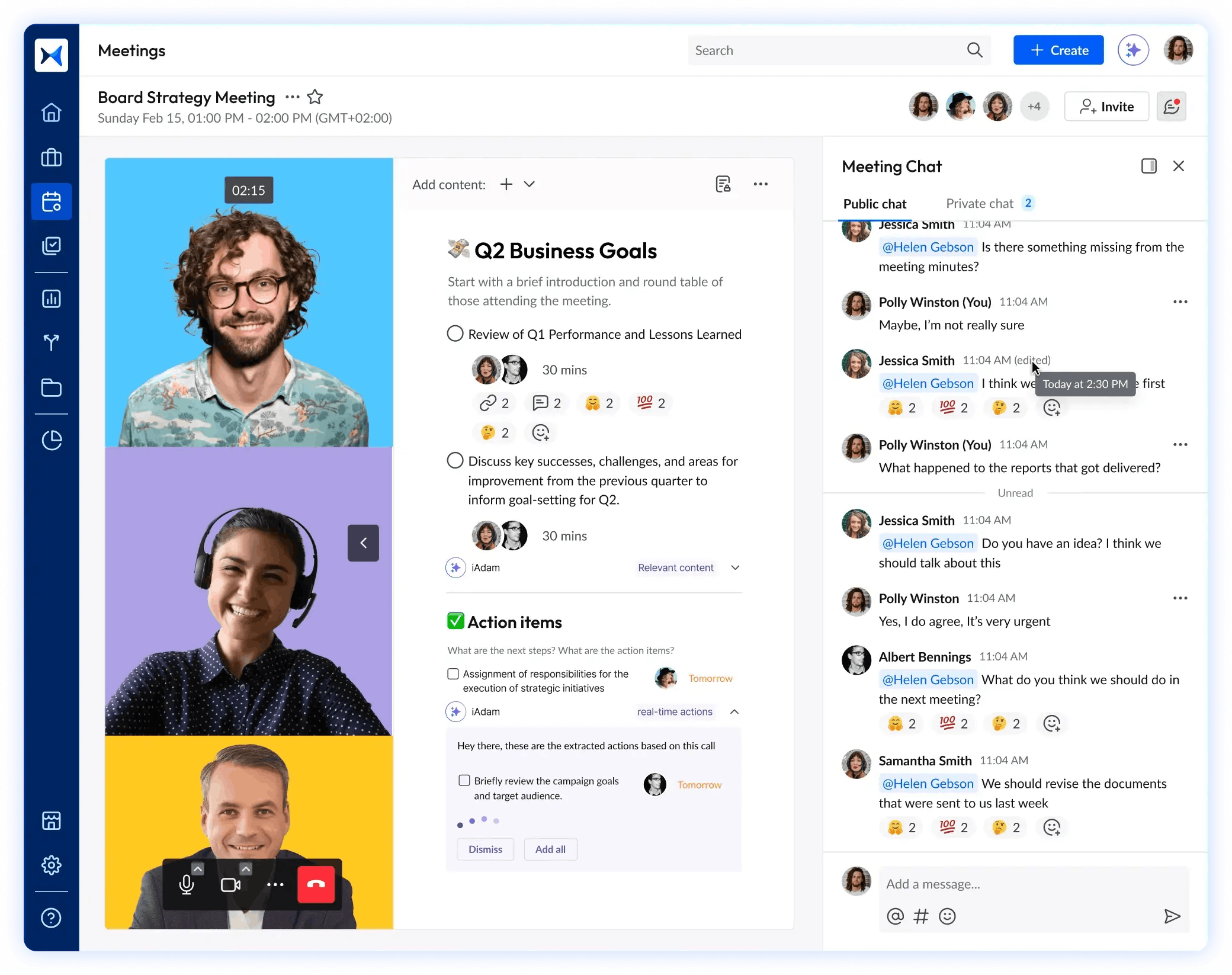
- Action tracking: The platform tracks assigned tasks, deadlines, and progress, ensuring that safety initiatives are followed through and no critical actions are overlooked.
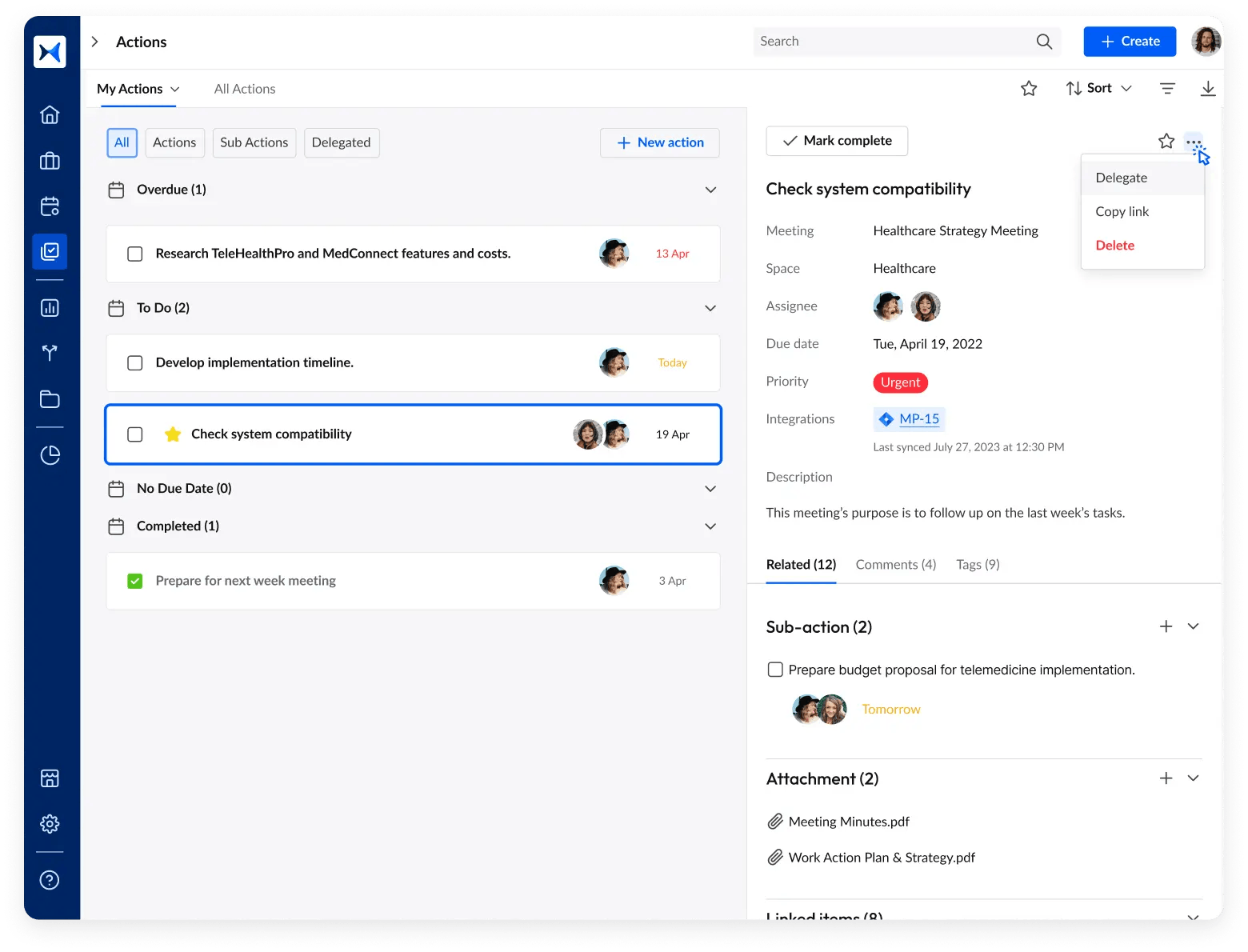
- Meeting minutes: Automatically generated and easily accessible meeting minutes allow committees to document decisions and discussions clearly, maintaining transparency and accountability.
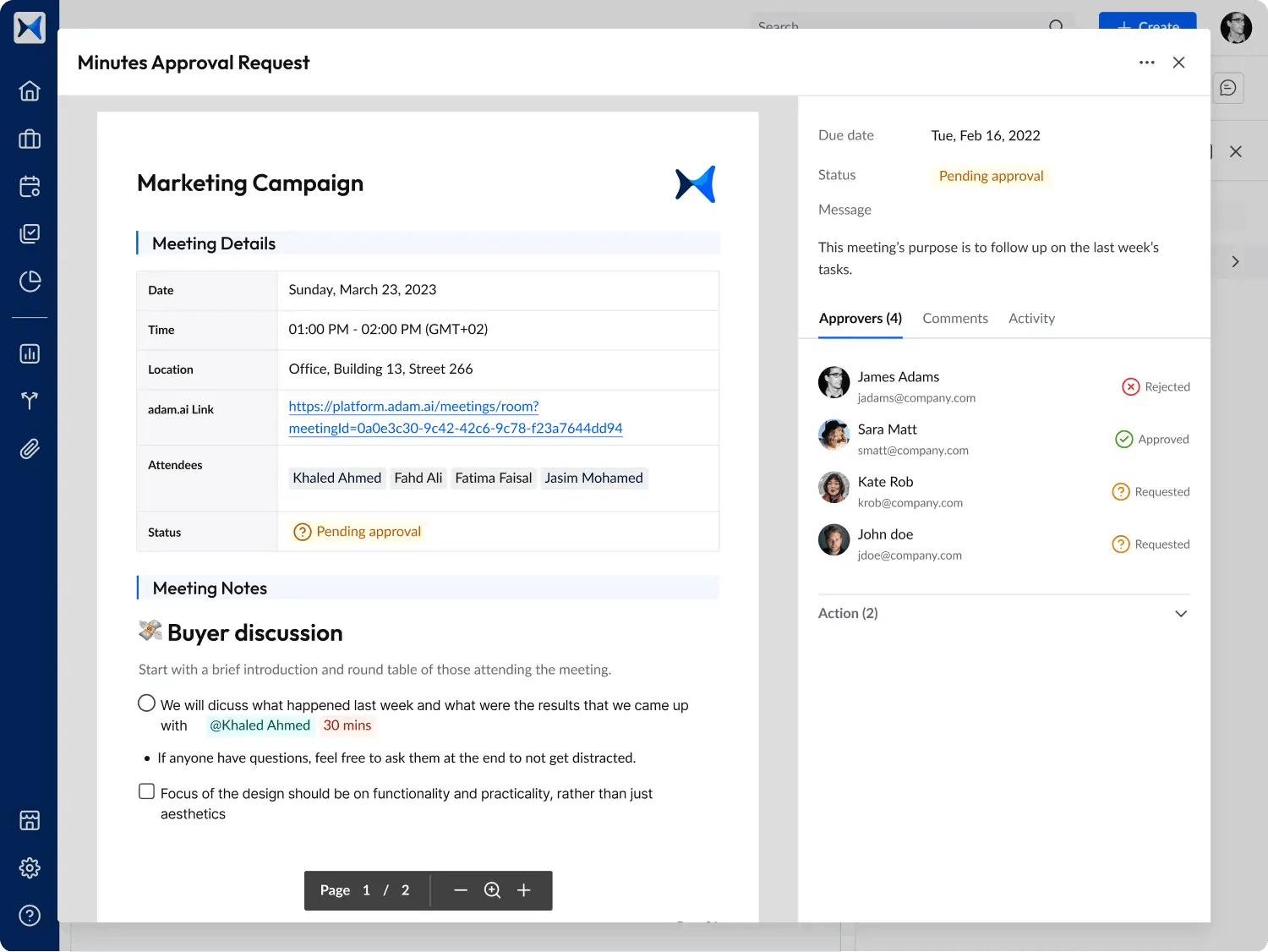
- Multi-space management: Committees can manage discussions across various teams or departments within a single platform, enabling better coordination in large organizations.
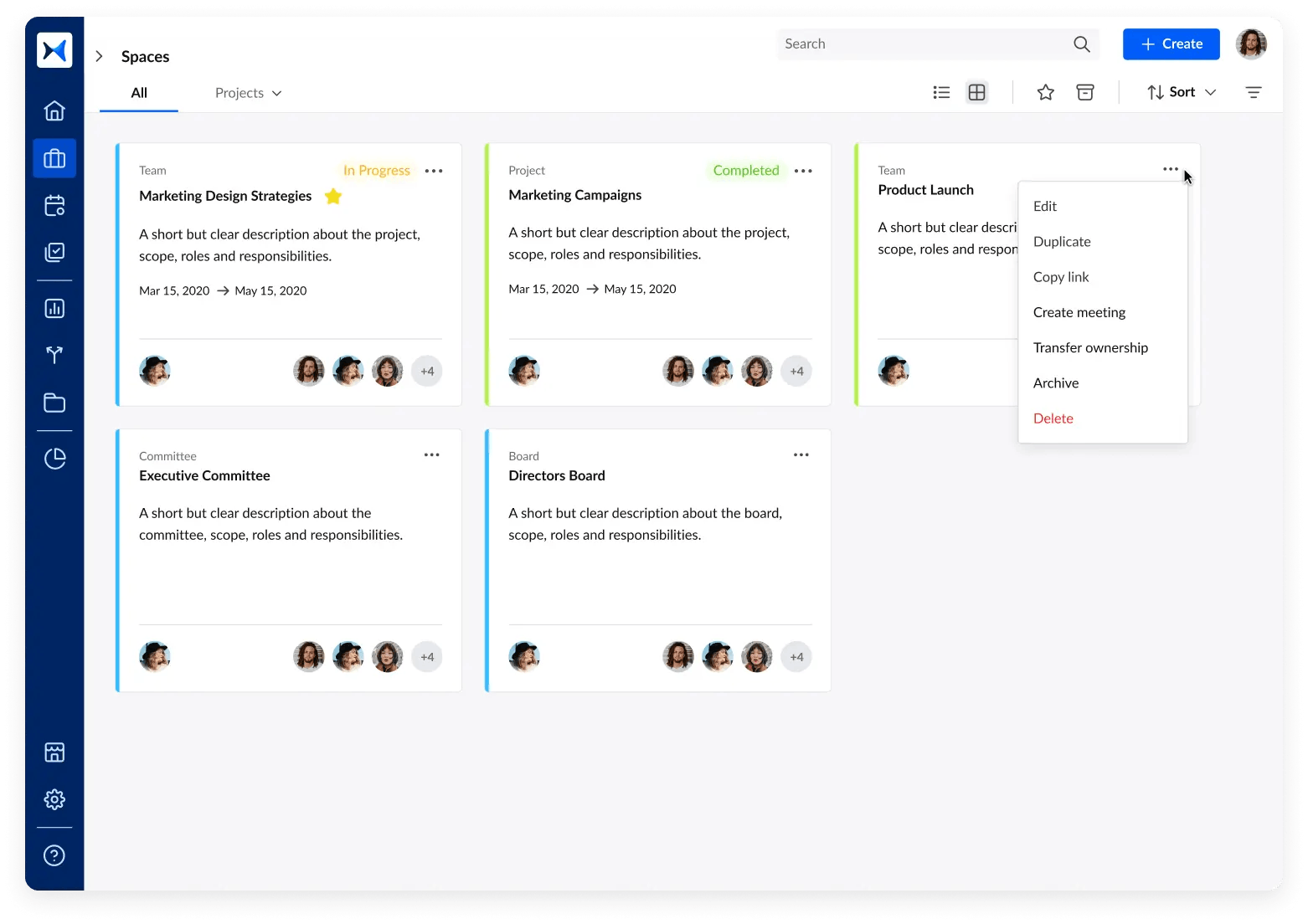
- Analytical dashboards: Data-driven insights provided by analytical dashboards help committees evaluate trends, measure the impact of safety initiatives, and identify areas for improvement.
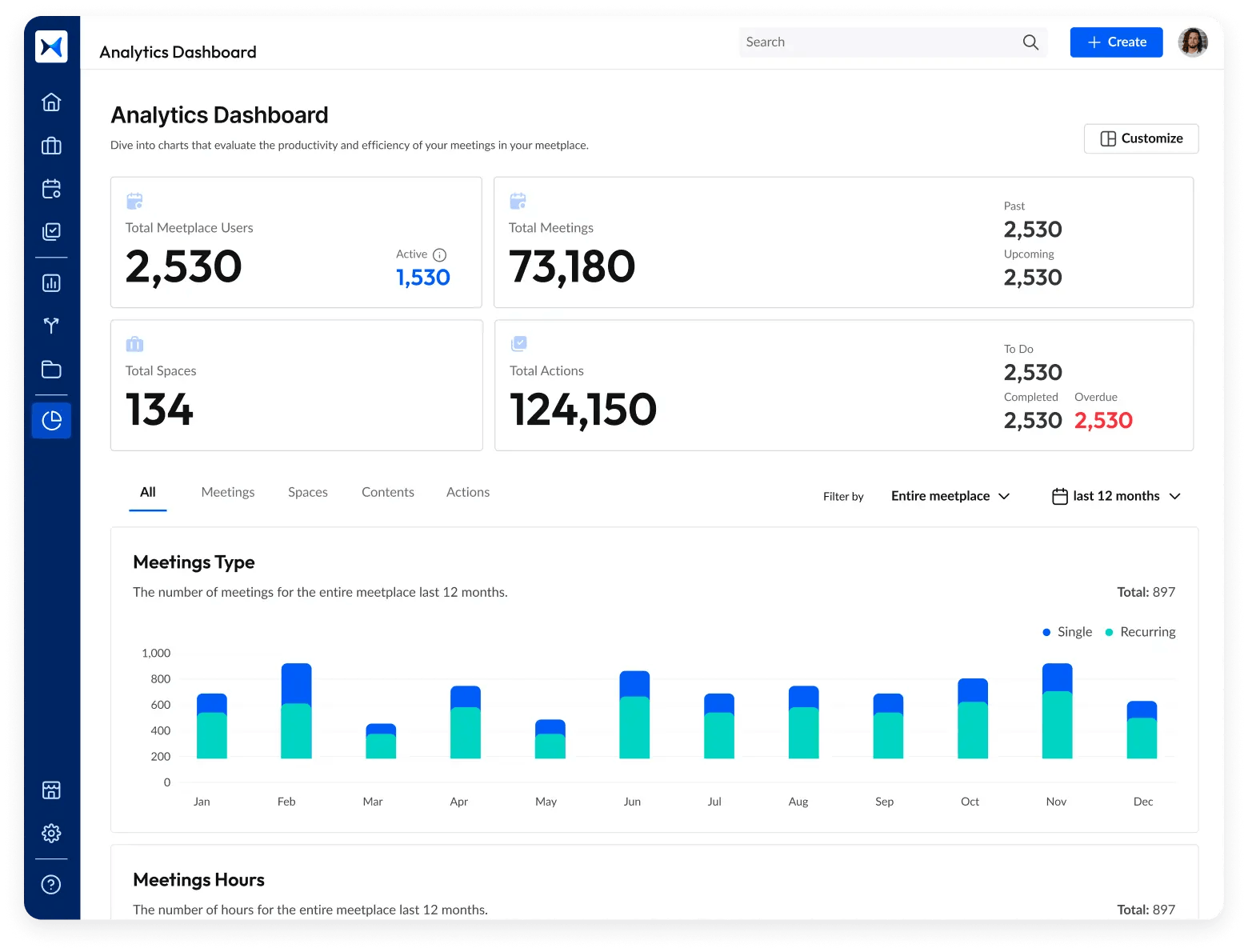
Transform how you conduct critical meetings—From meticulous preparation to effective execution and insightful follow-up, adam.ai integrates comprehensive analytics, full customization, and intuitive interfaces with powerful meeting management tools.
Easy onboarding. Enterprise-grade security. 24/7 dedicated support.
The bottom line
Secure meeting management solutions simplify the work of patient safety committees by streamlining agendas, improving collaboration, and tracking actions effectively. Modern tools like these ensure committees can focus on delivering safer, higher-quality care with confidence.
And while there may be multiple solutions available, here is why adam.ai is the meeting management software platform you can trust:
- adam.ai is one of Atlassian Ventures' portfolio companies.
- In the meeting management software category on G2, adam.ai has been ranked a leader and a high performer for successive quarters in the past years.
- adam.ai has been included in the Forrester Report in the AI-enabled meeting technology landscape.
- adam.ai is trusted and used by powerful teams and organizations worldwide for all types of critical meetings, like board, committee, project management, and business development meetings.
- And most importantly, adam.ai integrates with your existing workflow, is SOC2 compliant, provides dedicated support and success, and has a free trial option.
Subscribe to adam.ai blog
Stay ahead with the latest insights—get our newest blog posts, tips, and updates sent straight to your inbox.